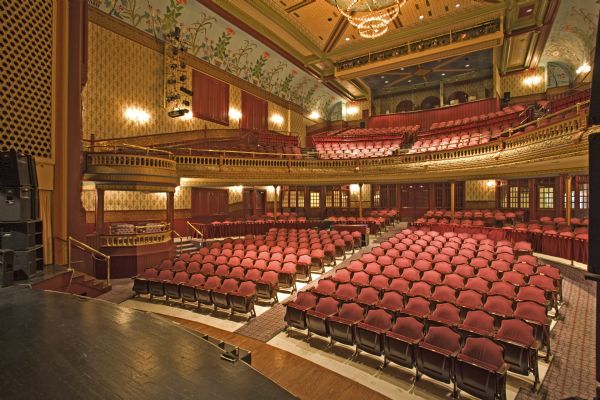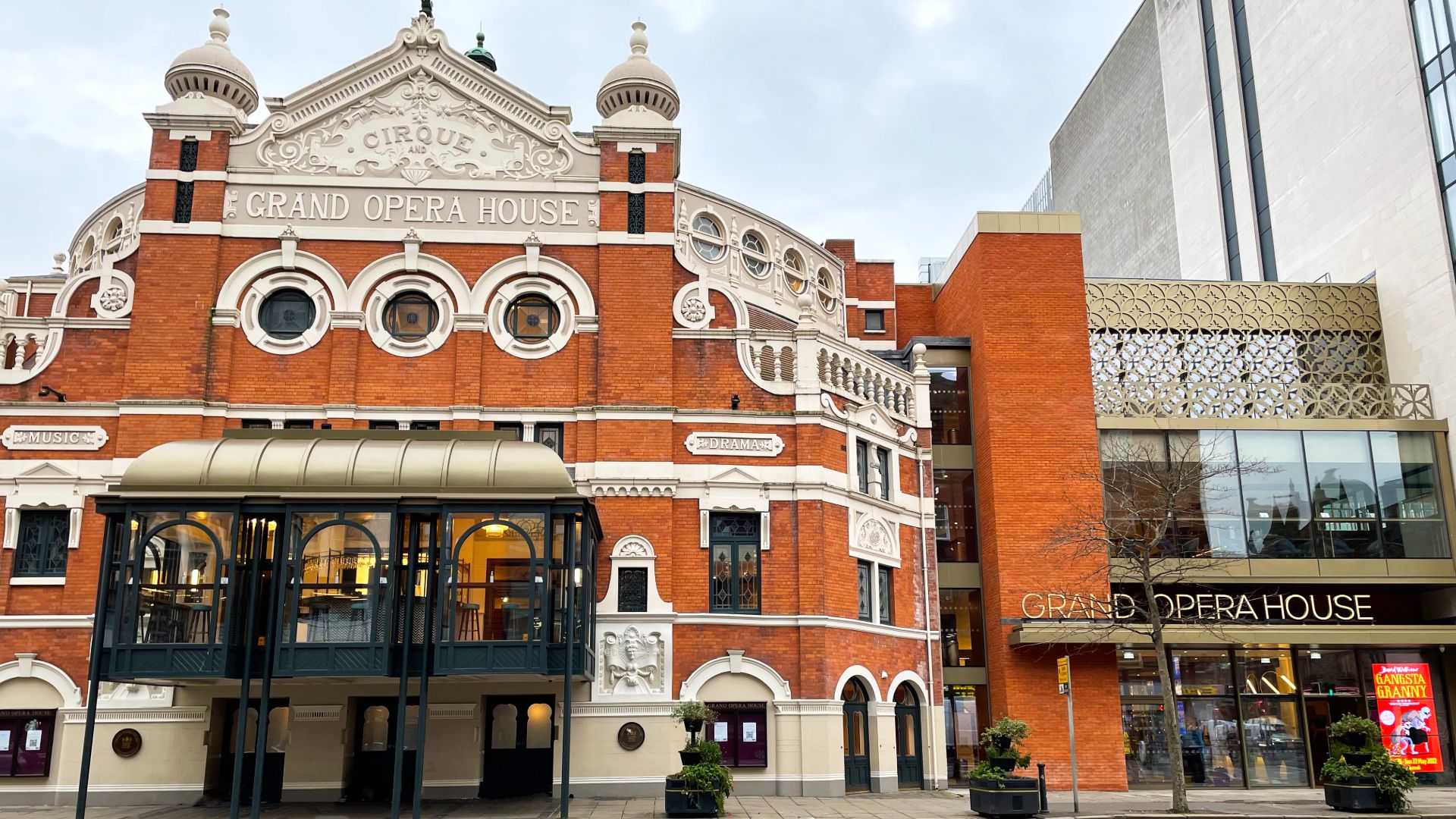Table Of Content

This whimsical show follows two great friends – the cheerful, popular Frog and the rather grumpy Toad – through four fun-filled seasons. The Grand seen in a detail from a 1907 Sanborn Fire Insurance Map overlaid on a 2007 satellite image of Main St. The bump offstage left was for dressing rooms and a prop room. Also see his Mainly Main poster set on Flickr for maps of the theatres on Main St. First opened in 1905, the Grand Opera House is a 1,030 seat performing arts center is available for performance rentals.

Company programs and features
However, following the action of Kenneth Jamison (director of the Arts Council of Northern Ireland) and Charles Brett (founder member of the Ulster Architectural Heritage Society and ACNI board member), the building was bought by the Arts Council of Northern Ireland and listed in 1974. The Permanent Secretary of the Department of Education, Arthur Brooke, lent his support to the project and his department provided the funding for extensive renovatation of the theatre. The theatre continued, however, to host musicals, plays, pantomimes and live music. Located at what is now Court and D streets, the opera house was built four years before Los Angeles had one of its own and was for many years perhaps the finest and most elaborate theater in Southern California. The opera house was built by mountain man-turned civic leader James W. Waters and his partner, Herman Brinkmeyer, as an investment in 1882. The beautiful red brick edifice with white facade topped by a golden eagle was known throughout the country for presenting top quality shows and concerts.
Box Office Hours
In the 60s a “modernization” project covered the beautiful red sandstone with tile and aluminum. A barbershop occupied a section of what is now the restored main lobby. And the popular Grand Grille next door, now a parking lot, became the offices of Dubuque Savings & Loan. As the modern “Cineplex” theaters opened on Dubuque’s west side the Grand began showing 2nd and 3rd run films for $1.00. After the Revolution, the new regime determined to privatize the previously state-run Opéra and the winner of the contract was a businessman who acknowledged that he knew nothing of music, Louis-Désiré Véron.
Concert organ
The most significant development, or transformation, of grand opera after the 1850s was its handling by Giuseppe Verdi, whose Les vêpres siciliennes (1855), proved to be more widely given in Italy and other Italian-language opera houses than in France. The taste for luxury and extravagance at the French theatre declined after the 1848 revolution, and new productions on the previous scale were not so commercially viable. The popular Faust (1859) by Charles Gounod started life as an opéra comique and did not become a grand opera until rewritten in the 1860s. Les Troyens by Hector Berlioz (composed 1856–1858, later revised), was not given a full performance until nearly a century after Berlioz had died, although portions had been staged before, but the spirit of this work is far removed from the bourgeois taste of the grand opera of the 1830s and 1840s.
Germany
An exploration of historic Los Angeles theatres including the grand movie palaces, neighborhood cinemas, and legitimate playhouses. Meyerbeer's only mature German opera, Ein Feldlager in Schlesien is in effect a Singspiel, although act 2 has some of the characteristics of grand opera, with a brief ballet and an elaborate march. The opera was eventually transformed by the composer to L'étoile du nord.
Mercer University Opera Presents “It's a Grand Night for Singing” Mercer Events - Mercer University
Mercer University Opera Presents “It's a Grand Night for Singing” Mercer Events.
Posted: Tue, 16 Apr 2024 07:00:00 GMT [source]
Joe Vogel's research indicates that noted Chicago theatre architect James M. Wood ( c.1907) probably also worked on the project. He's noted (as "Woods") in a July 8, 1888 Los Angeles Herald article as being involved in the theatre's renovation at that time. One of the world’s best-selling artists of all time, Tina Turner won 12 Grammy Awards and her live shows were seen by millions, with more concert tickets sold than any other solo performer in music history. The irrepressible comic strip heroine takes center stage in one of the world’s best-loved musicals. Originally called the New Grand Opera House and Cirque, it was renamed the Palace of Varieties in 1904, changing its name to the Grand Opera House in 1909. Charlie Chaplin performed there in 1908, and although Variety programmes dominated the pre-war years, entertainers as diverse as Nellie Melba, Sarah Bernhardt, Ralph Richardson and Gracie Fields performed there regularly.
Grand Opera House (Wilmington, Delaware)
It became a repertory theatre during World War II and at the celebrations to mark the end of the war, Eisenhower, Montgomery and Alanbrooke attended gala performances at the theatre. Lena Horne performed here in the 1940s on her way to and from her travels to France. Other frequent and notable guests with the company have included Samuel Ramey, Violeta Urmana, Hildegard Behrens, Denyce Graves, Frederica von Stade, Sumi Jo, Deborah Voigt, James Morris, Rod Gilfry, Jennifer Larmore, Vyacheslav Polozov, Maria Ewing, Susan Graham and Ferruccio Furlanetto.
The company offers productions in the standard operatic repertory as well as new and rarely staged operas. In 2015, Los Angeles Opera presented a new production of The Ghosts of Versailles by John Corigliano, the first major U.S. staging of that opera in 20 years. In 2014, Renée Fleming starred in a production of André Previn's A Streetcar Named Desire. Christopher Koelsch[4] has been the president and chief executive officer of Los Angeles Opera since 2012. He previously held the position of senior vice president and chief operating officer since 2010, after serving as vice president for artistic planning. He is the first year-round resident of Los Angeles to lead Los Angeles Opera since 2007.
Broadway & Ballets Series
Despite being a well-accomplished architect at the time of design, Gehry found himself an unlikely candidate for the job when the Disney family was looking for the hall's designer. Even with the location of the Walt Disney Concert Hall set to be in his hometown of Los Angeles, California, Gehry, when discussing his thoughts at the time the architect was selected, said, "it was the least likely thing that I thought would ever happen to me in my life".[6] Gehry's opinion was supported by the representative of the Disney family. Gehry says he was told, "that under no circumstances would Walt Disney's name be on any buildings that I design".[6] Much of this doubt came from Gehry's reputation for relying on the use of cheap materials in his architecture that were used in unconventional ways.
The writing was on the wall for the grand ole opera house and its last day of operation came May 15, 1927. The beautiful edifice was torn down later that year when Court Street was extended from D Street through to the new courthouse on Arrowhead Avenue. Over the next decade, Maude Adams performed the role more than 1,500 times. One of those performances was at the San Bernardino Opera House on April 19, 1913. According to Sun columnist Earl E. Buie, in one of his “They Tell Me” columns in 1958, the Opera House’s seating capacity was between 1,200 and 1,400. He noted on the really big nights the house sold out days in advance.
As movies became more popular the Grand installed a “fly-in” screen in 1915 and began showing silent films with piano, theater organ or small orchestra accompaniment. In 1928 with live theater receipts diminishing and film revenues on the rise a decision was made to convert the Grand into a full time movie house. When The Merry Wives of Windsor closed on March 14, 1928 a major remodeling project began. The second balcony and glamorous box seats and stalls were removed. The fly space for scenery above the stage was closed off and the orchestra area covered over to make room for more seating.
Between 1838 and 1850, the Paris Opéra staged numerous grand operas of which the most notable were Halévy’s La reine de Chypre (1841) and Charles VI (1843), Donizetti's La favorite and Les martyrs (1840) and Dom Sébastien (1843, librettos by Scribe), and Meyerbeer's Le prophète (1849) (Scribe again). 1847 saw the premiere of Giuseppe Verdi's first opera for Paris, Jérusalem, an adaptation, meeting the grand opera conventions, of his earlier I Lombardi alla prima crociata. San Francisco Opera began presenting productions in Los Angeles in 1937 and continued to do so every fall until 1969.[6] The NYCO brought productions to Los Angeles every fall from 1966 to 1982. When the producers of No No Nanette decided to do a Midwest preview they selected Dubuque’s Grand Opera House. For several years the Grand Stock Company produced a new play every week.
During the 2001–2002 season, it mounted a production of Wagner's Lohengrin, directed by Austrian actor Maximilian Schell and a double bill of Bartók's Bluebeard's Castle and Puccini's Gianni Schicchi, directed by filmmaker William Friedkin. Garry Marshall directed his own adaptation of Jacques Offenbach's La Grande-Duchesse de Gérolstein in 2005. Friedkin returned to direct Richard Strauss's Ariadne auf Naxos in 2004 and, in 2008, the first two parts of Puccini's Il trittico, Il tabarro and Suor Angelica, a production that also featured Woody Allen making his operatic debut staging Gianni Schicchi. Upon completion in 2003, the project cost an estimated $274 million; the parking garage alone cost $110 million.[7] The remainder of the total cost was paid by private donations, of which the Disney family's contribution was estimated at $84.5 million with another $25 million from The Walt Disney Company. By comparison, the three existing halls of the Music Center cost $35 million in the 1960s (about $330 million in 2021 dollars). Having made a fortune in his stewardship of the Opéra, Véron cannily handed on his concession to Henri Duponchel, who continued his winning formula, if not to such financial reward.
In 2014 a significant bequest from the estate of Ervin and Alice Hafeman allowed us to restore the orchestra area that had been closed off since 1928. Musicians now will perform on a level about 6 feet lower than the main floor auditorium, providing super acoustics for musicals and unobstructed sight for persons sitting in the first few rows of seats. Well, at least Kysor and Morgan were the architects of record. In "The Childs Opera House," a lengthy article describing the theatre in the May 25, 1884 issue of the Los Angeles Herald it's noted that the "designer" of the house was a Colonel A.M. Gray. Gray was also involved in the initial bookings of the theatre. The article can be viewed on the website of the California Digital Newspaper Collection.
Hence they lost pride of place at the Paris Opéra (especially when many of the original stage sets were lost in fire in the late 19th century). However, as late as 1917, the Gaîté-Lyrique devoted an entire season to the genre, including Halévy's La reine de Chypre. For production statistics of grand opera in Paris, see List of performances of French grand operas at the Paris Opéra. The company has also frequently turned to the cinema world for directors of its productions.

No comments:
Post a Comment